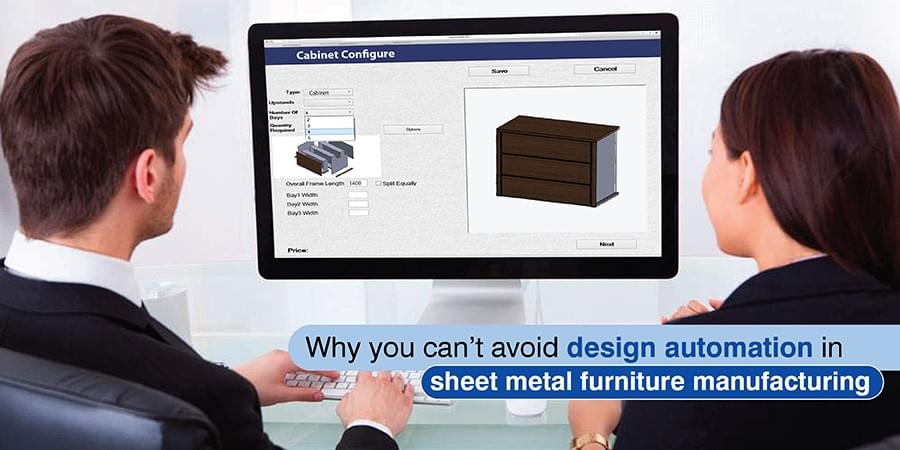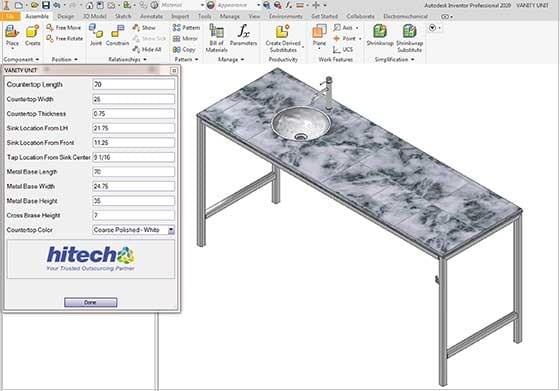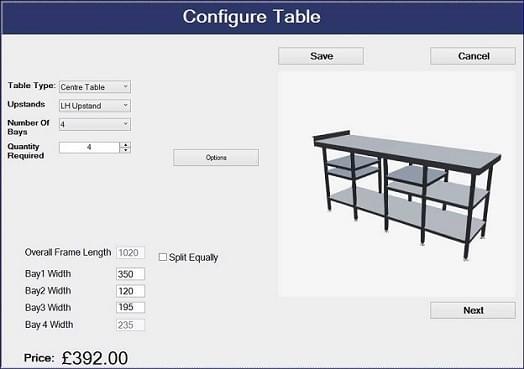
Design automation, powered by macros, scripts, and logical-rules-based product configurators, enables sheet metal furniture manufacturers to respond ably to the pressures of mass customization with faster design cycles. Even back in 2015, a Deloitte study1 had found 20% of respondents ready to pay 20% more for personalized products. The demand trend has grown since then, and the industry has reacted with mass customization, LoT1, product configuration apps, and a mind-boggling range of variations for every product.
Design automation entered the process as a natural extension of the market trend shift and endeavors to optimize production, cost-efficiency, reduction of errors, and decrease in lead times. With furniture design shifting to bespoke nature, furniture manufacturers are actively investing in solutions that automate repetitive tasks to accelerate the design cycle.
But for smaller players in sheet metal furniture manufacturing, adaption has been hard, or in some cases impossible, due to lack of scripting skills. And it is here that design automation service providers shine to optimize every related process and make cost-effective customization feasible in sheet metal furniture.
Difficulties in manufacturing customized furniture
Sheet metal furniture manufacturers have their own distinctive issues related to tool setups, capabilities, materials and their properties, and technical labor. The use of CAD software, along with the use of cross-platform visualization tools like DriveWorks has helped to relieve much of their pain.
Conventional CAD software, by itself, cannot solve some critical workflow concerns in furniture customization, because:
- Customized designs mean numerous revisions in primary furniture shop drawings
- Iterative design changes mean a lengthy and time-taking approval process
- Lack of automation means unacceptably long order-delivery cycles
And the above, invariably lead to design errors, lengthy design cycles, collaboration complications, and other challenges, resulting in an extended time to market.
Also, the challenges of having to buy material in small lots increases costs, and as found in Lectra’s research cited above, 49% of furniture manufacturing firms find the increase in costs, brought about by reduced economies of scale, to be a major obstacle to adopting mass customization.
Thus, to devise a workflow that helps to tackle most of the above issues, design automation has become the most important tool in the arsenal of sheet metal furniture manufacturers.
Benefits of design automation/configurator to furniture manufacturers
Design automation positively impacts the furniture manufacturing industry by automating modeling and drafting tasks. It enables manufacturers with several aspects. Some of which include:
1. Elimination of modeling and drafting
Design automation, as the name suggests, automates the design stage of the product development process and speeds up the entire engineering cycle. With design automation using scripts and macros or product configurators, you get to create customized CAD models and manufacturing drawings in a few minutes. This eliminates the long approval process for design configurations and empowers manufacturers to start same-day manufacturing.
A vanity manufacturer used iLogic to develop a configurator and removed longer delivery timelines of vanities. The configurator reduced a typical customized design development time of 3-5 days to a few hours.

2. Design palate to choose from
When you deploy a configurator, the first step is to create a master 3D model in CAD that is used for customization later. Alongside, you also create design options of accessories, parts, etc. for the model and develop logical rules for the customers or the sales team to configure it. For example, for a table you must:
- Set limits of the dimensions
- Specify the available materials like glass, metal, wood, etc.
- Ask the customer to specify corners
- Types of legs, surface finish, etc.
Likewise, there are multiple options and configurations to be taken. These different combinations and design specifications help create numerous options for the final table. Thus, you are allowing your customer or the sales team to create products that are mixed and matched from a master design palate.
3. Automated manufacturing drawings and documents
When you automate designs, the 3D customized product model is configured using rules. These rules also generate relevant manufacturing drawings directly from the 3D model and also enable fetching relevant documents. It creates documents like BOMs and DXF files for shop floor and sales quotes and assembly features to be shared with customers.
A manufacturer of stainless steel tables for retail food chain stores struggled to manage costs and design a database of customers using only SolidWorks. They approached TrueCADD teams to develop a DriveWorks configurator to efficiently manage the design database and offer secure quotes to customers. The deployment of DriveWorks empowered the manufacturer to offer a better sales experience and reduced extra expense.

Conclusion
Over the last few decades, with millennials settling down and buying homes, there has been a clear shift in customer perception of furniture as a short-term style statement, and not a long-term investment.
To meet the new market realities, furniture companies are reimagining and restructuring their production processes, making them agile and robust with the full use of 3D virtual prototyping, virtual product reviews, and design solution standardization.
With CAD software already shouldering much of the pain, a customized furniture firm’s real challenge today is to optimize processes and ensure the production of limited pieces in a wide range of variants. But to remain competitive, it needs to be done at costs and efficiencies that closely match that of conventional mass production.
About Author:
Usha B. Trivedi is a mechanical design engineer at TrueCADD – a company invested in industrial CAD drafting, modeling, and design automation. Ms. Trivedi writes about solution finding approach in CAD and design automation challenges backed by her years of exploration in industrial designing in furniture, millwork, and metal fabrication designs.